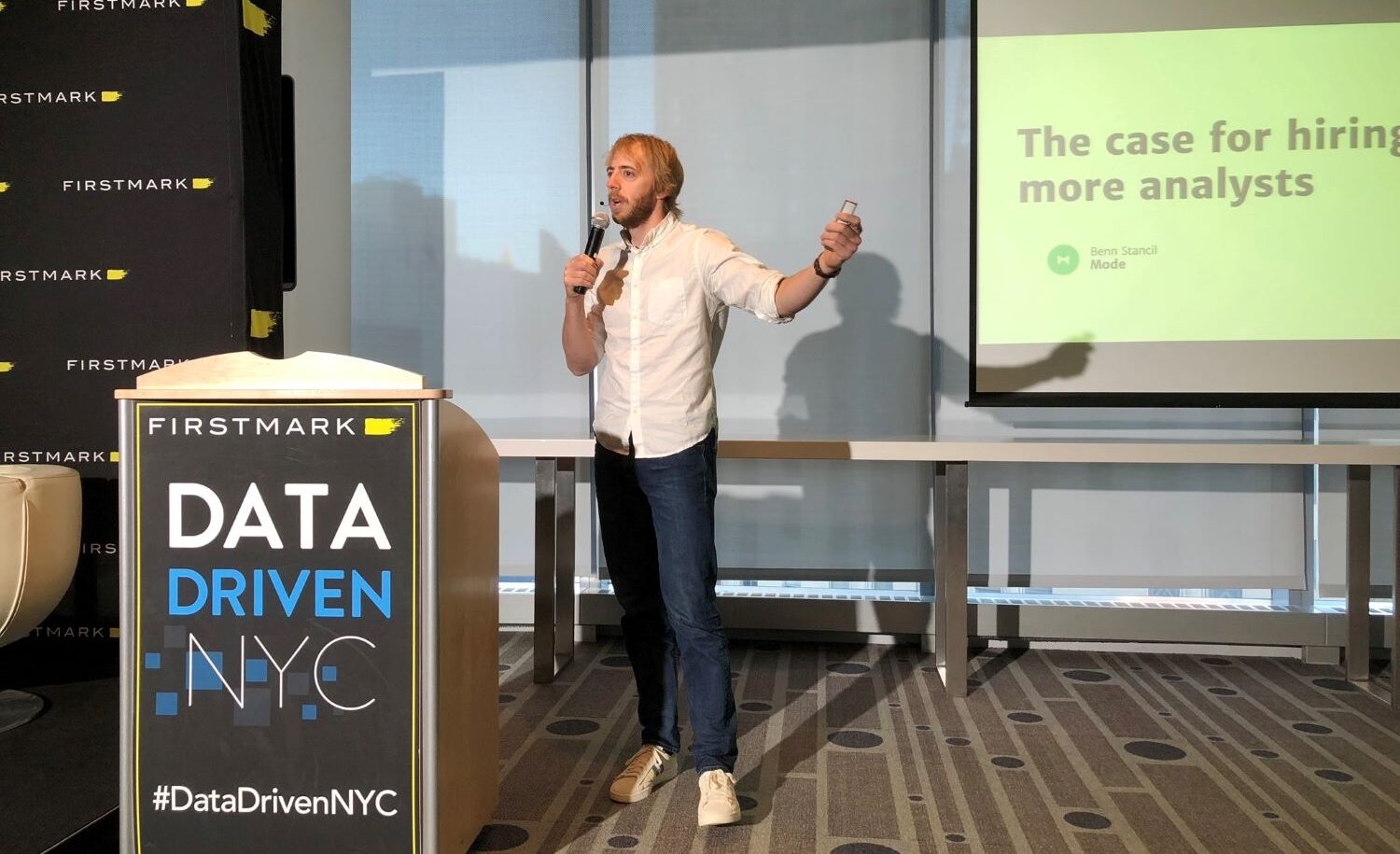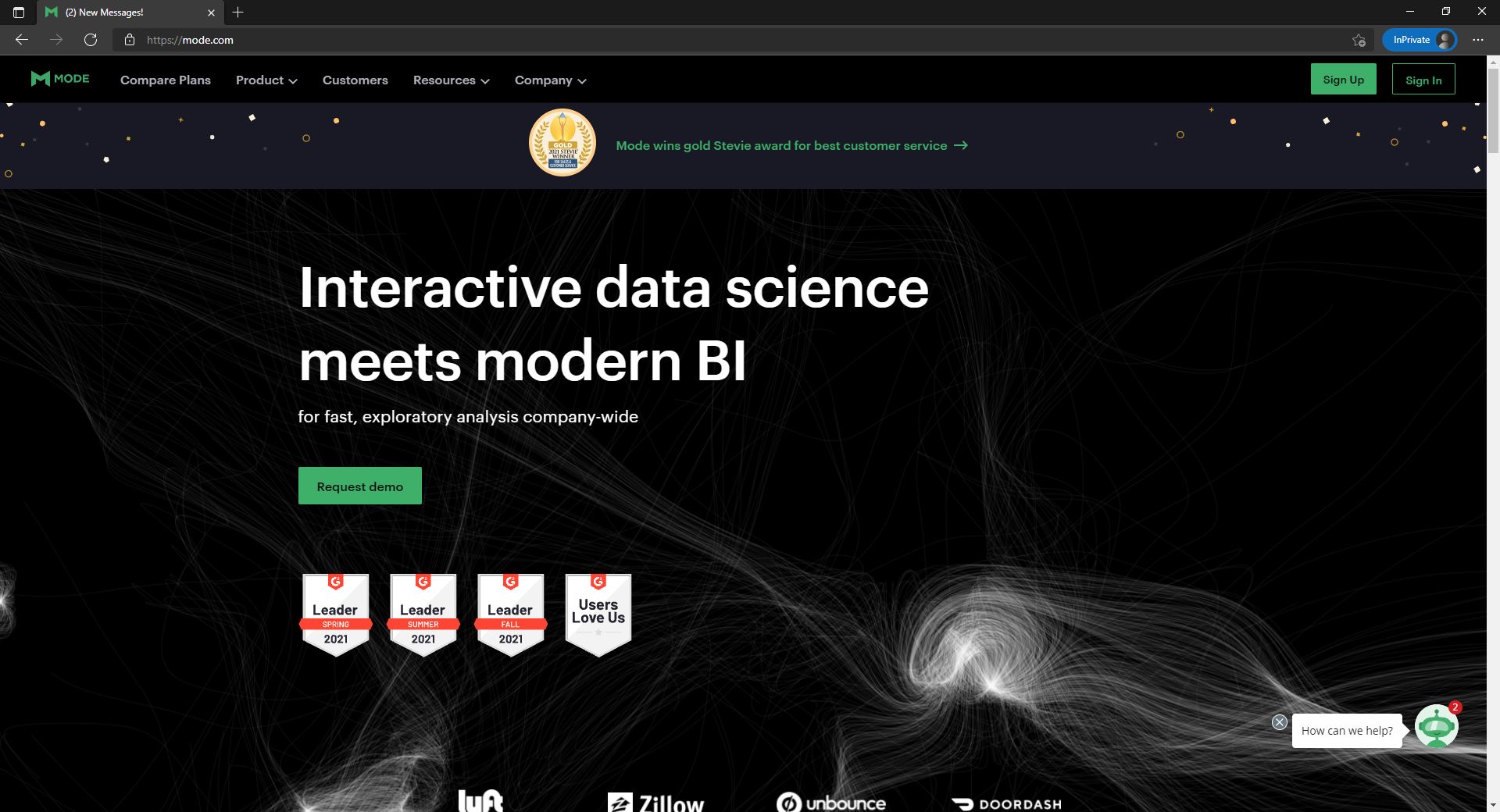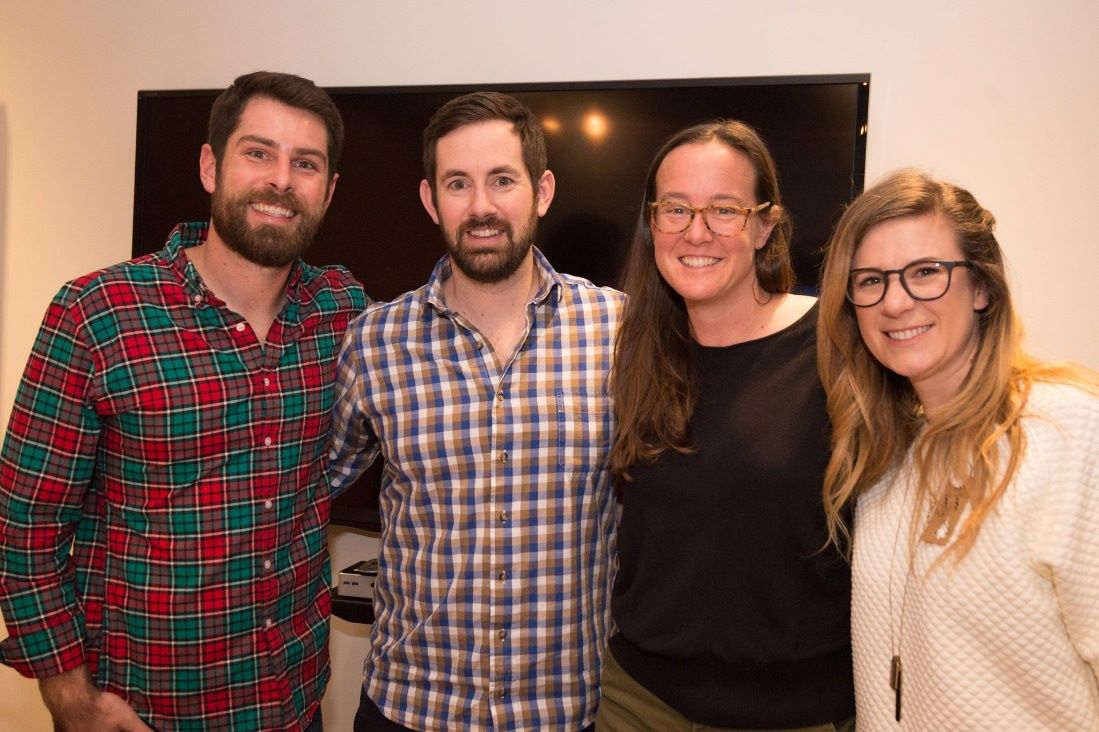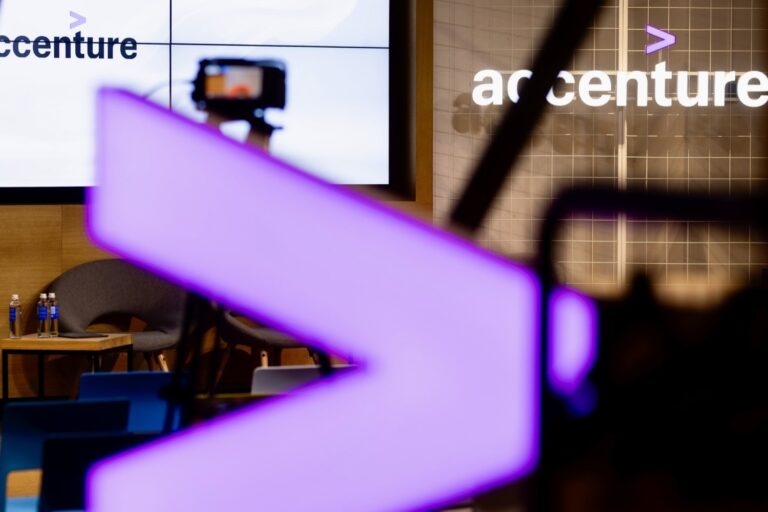Mode Analytics & Its Lightbulb Moment That Upgrades the Game of Data Science
Data is the fuel that keeps today’s businesses running as companies have to take more advantage of data science if they want to enhance their decision-making. A startup called Mode Analytics has successfully solved this trouble.
The “Aha Moment” That Set Foundation for Mode
Mode was co-founded by Derek Steer, Benn Stancil (Mode’s current president) and Josh Ferguson (initially the CTO and now chief architect) in 2013. According to Steer, they were motivated to start the company after seeing gaps in the market during their prior jobs.
Specifically, the story began when all three were working together at Yammer. They were members of a team which worked on Yammer’s proprietary data analytics tools. At that time, Yammer was a relatively early adopter of analytics. To support their work at this company, Steer’s team built their own internal toolset to distribute data within Yammer.
When Yammer was acquired by Microsoft in 2012, they started to discuss with other people in Silicon Valley who were working in data analytics at other tech companies like Uber, LinkedIn, Spotify, etc. Surprisingly, they discovered that other businesses were dealing with identical issues and developing their own tools.
At that time, many companies had the same operation to help businesses to make better decisions based on data. In fact, rather than continuing to manage data using Excel, those companies were building a slew of new technological tools based on SQL, Python, and R . It meant that if someone could create something in which data analysts could work effectively across many companies, people would buy it.
Steer and his partners realized that this market was going to continue to grow. They recognized an opportunity to create a platform that could give a broader range of users with similar capabilities, such as SQL Editors, Notebooks, reporting tools, and dashboards. “We and other companies like Facebook and Google were building analytics internally,” Steer recalled, “and we knew that the world wanted to work more like these tech companies. That’s why we started Mode.”

What are Trends behind Success of Mode?
Most important, Steer learnt how to establish a “freemium” software business at Yammer, which is accepted by an organization when a small group of employees actively uses the free version. Indeed, Mode’s strategy is similar: it provides free access to a tool called Mode Studio to data scientists in the hopes that it would become a fundamental part of their workflow, and that they will subsequently encourage decision-makers across the company to use it.
That strategy seems to be working. For some context, Pitchbook notes that last year this company’s valuation was $106 million. It now has a customer list that it says covers 52% of the Forbes 500, including Anheuser-Busch, Zillow, Lyft, Bloomberg, Capital One, VMware and Conde Nast. It says that to date it has processed 830 million query runs and 170 million notebook cell runs for 300,000 users. In addition, approximately 2,000 businesses use its free service.
Currently, the company is focusing on businesses with up to 5,000 seats. It likewise primarily targets a US audience. In addition, the firm intends to develop each of its departments, with a special focus on its community initiatives.

However, as other startup, Mode suffered lots of difficulties before reaching today achievement. At the start, there were numerous single points of failure and many challenges to overcome because it had an extremely basic product and few consumers or workers.
All of the co-founders discovered that the market is a tremendous force that is difficult to persuade. They needed to strike the appropriate balance between keeping faithful to their vision while changing it as needed to suit market realities. They also intended to develop their company on a solid foundation, both morally and financially. That is why their tenacity and perseverance as well as right orientation led to their ultimate triumph.
In fact, Mode’s dramatical development so far has proved that of the rise of data science overall in the process of just doing business. As a result, Mode’s addressable market has grown as well.
Even as the pool of prospective consumers for Mode’s products has grown, so has the total opportunity. In recent years, there has been a significant shift in data science and big data analytics, with a number of tech companies developing tools to assist non-technical people “become data scientists” by adding more intuitive interfaces such as drag-and-drop features and natural language searches. Some examples for those companies are: Sisense (which has been growing its analytics power with acquisitions like Periscope Data), Eigen (focusing on specific verticals like financial and legal queries), Looker (acquired by Google) and Tableau (acquired by Salesforce).
Mode’s strategy has been similar to that of another rival, Alteryx, in that it has focused on developing tools that are still largely geared at assisting data scientists. “You may choose between Snowflake, Redshift, Big Query, Databricks, or any other database technology on the market today,” Steer said. The goal today is to give those who use such databases tools to help them accomplish their jobs faster and better.
A Long Way to Get Domain Name
The importance of a domain name in the early phases of a startup’s life is evident for software businesses. Because this is how most consumers remember and access a brand, it should be a high priority for attention. However, when Mode was started eight years ago, it did not have the domain Mode.com as it does now.
The reason was simple: a company called Glam Media rebranded to Mode acquired the Mode.com domain. They had raised quite a bit of VC funding and appeared to be growing really quickly that Mode’s co-founders didn’t have enough money to buy this domain. Instead, they began their journey with modeanalytics.com, figuring that they would pick Mode.com up eventually as they grew.
An incident happened changed the situation. Mode had the option to bid at that moment, but not just for the domain name; it came with a slew of intellectual property and other assets as well.
Mode didn’t win since it didn’t desire some of the other items in the package and its offer was too low. However, fortunately, the buyer of the lot didn’t want the Mode.com domain, thus it was put back on the market a year later. That’s when Mode got it.

It’s hard to quantify how weight the domain put on Mode’s development but because it owns the Mode.com domain, it’s likely that some of Mode’s clients regard the company as less of an early-stage business. Perhaps more significantly, this establishes a strong domain authority for the brand, which it intends to utilize indefinitely.
That’s also Mode’s CEO advise: “Choose the name of your company with an eye toward what .COM domains are available now because if you end up becoming big and successful, you will want that domain eventually.”
Mode’s Business Culture
It can’t be denied that working culture has great contribution to a company’s success. Mode did not the exception. Mode currently has more than 100 employees and works with over 500 customers. At this company, the intention of building our culture is around a defined set of core values in order to get an ideal working environment.
In the early days of Mode, the whole executive team was very deliberate about the culture they intended to create. Because many of Mode’s early workers understood the type of firm they wanted to build and the common poisonous components they wanted to avoid. And they were able to do so.
“We were fortunate that some of Mode’s team members were instrumental in bringing issues like diversity, equity, and inclusion to the forefront in Silicon Valley. While these things have become more mainstream as of late — movements like Me Too and Black Lives Matter have put DEI initiatives at the top of a lot of CEOs’ priority lists — we’ve still got a long way to go, both as an industry and a company.” – said Steer.
The CEO of Mode defined the type of firm they are by laying down their beliefs and operating principles openly and informally, and by setting an example for everyone else.
5 Keys to an App or SAAS Success
According to Benn Stancil, Co-founder, President, and Chief Analytics Officer of Mode, in order to create a successful App or SaaS, there are some central points to take care.
#1. Be Consistent
To Stancil’s point of view, identifying the right reason before starting a company is essential. In fact, we can’t always control the outcome, so it’s particularly important to feel good about what you’re doing, even if it doesn’t work. Sometime the business cannot go well as well as we expected. If we are motivated at first stage, we will have reasons to the effort of solving the problems. Otherwise, we could be setting ourselves up for a difficult circumstance.
#2. Be Flexible
Markets matter a ton. It is almost impossible to satisfy all opinion of the market, but we can do what a large number of people need. If we can meet and offer right demand, we’ll win. It’s far more difficult to succeed if we have to continually persuade people to use your solution to address an issue, they don’t believe they have yet. So that’s why we should always be flexible to current trends.
#3. Be a Good Listener
Listen to our customers. In the case of Mode, in Silicon Valley, it’s sometimes tempting to think that you know the best way to do everything, based on what the big tech companies are doing, but that doesn’t necessarily solve the problems that most businesses are facing.
“We want to build data products for the 99% — not necessarily for the Facebooks and Googles of the world who are trying to deploy massive machine learning models for billions of customers, but for the vast majority of other businesses that have simpler needs and questions.” – said Stancil.
#4. Be Careful
Little decisions have a big impact. Minor chances create precedents. Small precedents matter, partially because they keep you accountable, but more importantly because they serve as a model for how things should be done in the future. A seemingly small adjustment about a process to follow or a judgement about what you value can snowball into “the way we do things.” This effects the company’s culture much.
#5. Be Patient
Running an app is a marathon, not a sprint. “Don’t try to be a hero and try to sprint through it all at once. Be prepared to go the long haul and recognize when you need to lean on others to get through it.” – said Stancil. As many people have said, overnight success doesn’t happen overnight.
When we see an issue that we may be compensated to solve, we persuade ourselves that if we simply comprehend the problem, we can figure out the answer. The issue is that we have all the inspiration we require.









